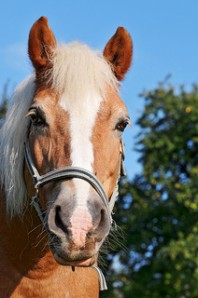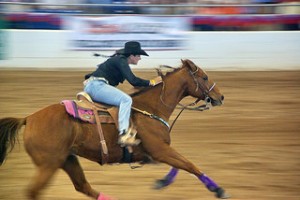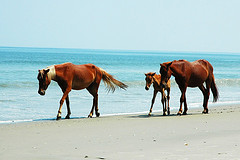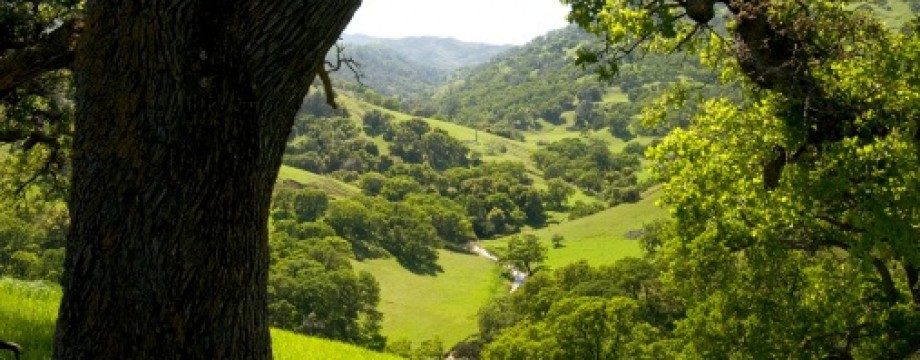.
Sorry for being a little late today. The computer gods were being difficult.
 Last time I talked about how horses communicate with sounds. While humans are naturally most focused on vocalizations, the horse’s most important form of communication is by body language. The variety and complexity is actually quite astounding.
Last time I talked about how horses communicate with sounds. While humans are naturally most focused on vocalizations, the horse’s most important form of communication is by body language. The variety and complexity is actually quite astounding.
If you see a horse with its ears back and pinned to its head, eyes slitted, nose tight, and head snaked forward in an aggressive manner, I hope you would realize that the animal is upset or angry about something. And that you would have enough sense to stay away. On the other hand, a horse with its ears forward, eyes open, nose relaxed, and head slightly extended is interested in something and possibly looking for a treat. That’s a horse you can approach (with the owner’s permission). Between these two extremes are a wealth of expressions that indicate what is going on with a horse. And this is just looking at the head.
The ears are like miniature radar cones and they tell you where the horse is focused. Ears rigidly forward with the head high, eyes wide and nostrils flared says he’s on high alert and looking at something exciting or scary and debating about departing the scene. Since horses are prey animals, their first response to something frightening is to flee. That plastic bag may be a horse-eating monster!
A slightly modified version of this, with the head down and a curious expression, indicates something interesting to explore. Again, as prey animals, it’s important for them to investigate their environment to determine if something is a threat, so they have a strong sense of curiosity. And an even stronger desire to play. My Portia was initially scared of the pink un icorn piñata hanging from a tree near the pasture and high-tailed it back to the barn. When a crowd of kids gathered around it and began playing with it, she couldn’t contain her curiosity and crept back up to the fence. Each time someone whacked at the toy and sent it swinging, she’d run away, then stop and turn to watch. In a few minutes, she was back at the fence again. I think she was quite disappointed when it finally broke.
icorn piñata hanging from a tree near the pasture and high-tailed it back to the barn. When a crowd of kids gathered around it and began playing with it, she couldn’t contain her curiosity and crept back up to the fence. Each time someone whacked at the toy and sent it swinging, she’d run away, then stop and turn to watch. In a few minutes, she was back at the fence again. I think she was quite disappointed when it finally broke.
Ears that are swiveled backwards are quite different from angry, pinned ones. These mean the horse is focused on something behind him, hopefully the rider. You see this quite often in training sessions and in the show ring. The horse is paying close attention to the rider’s commands. You’ll also see one ear turned back and the other forward or sideways. This indicates a divided attention, with something that the horse needs to keep an eye and ear on.
 Sometimes you’ll see the ears flopped sideways, with the head down and eyes half closed, indicating a totally relaxed, unconcerned attitude. This is great when lazing around in the pasture. However, on the trail a spaced-out horse could be suddenly startled and react in a way that may unseat its rider. Personally I prefer a horse that’s paying some attention to its surroundings.
Sometimes you’ll see the ears flopped sideways, with the head down and eyes half closed, indicating a totally relaxed, unconcerned attitude. This is great when lazing around in the pasture. However, on the trail a spaced-out horse could be suddenly startled and react in a way that may unseat its rider. Personally I prefer a horse that’s paying some attention to its surroundings.
Learning to read horse body language is a skill that takes time to develop. Also, not all horses are alike, so you need to be aware of the individual. But if you’re going to be around them (or write about them), it’s a vital knack to develop. This post focused on the head. Next time I’ll talk more about the rest of the body.
*****************************
Horses on beach: photo credit: <a href=”http://www.flickr.com/photos/nicksee/3908901846/”>nick see</a> via <a href=”http://photopin.com”>photopin</a> <a href=”http://creativecommons.org/licenses/by-nc/2.0/”>cc</a>
Horse head: photo credit: <a href=”http://www.flickr.com/photos/tambako/2889785643/”>Tambako the Jaguar</a> via <a href=”http://photopin.com”>photopin</a> <a href=”http://creativecommons.org/licenses/by-nd/2.0/”>cc</a>
Barrel racer: photo credit: <a href=”http://www.flickr.com/photos/alanenglish/3354741725/”>Al_HikesAZ</a> via <a href=”http://photopin.com”>photopin</a> <a href=”http://creativecommons.org/licenses/by-nc/2.0/”>cc</a>






Hi, Kate! So interesting. I was watching my malti-poos this morning and how they greeted each other. Totally fascinating. Great stuff.
Glad you enjoyed it. It is fun to watch animals and their interactions.
One difference between horses and dogs, horses don’t usually sniff tails. (Unless it’s a stallion checking out a mare in heat.) They sniff noses instead. Apparently their breath tells a lot about them.
Love this Kate. I think horses are so interesting. I had a pony growing up, and my brother has horses. I have a neighbor who has 4 and I’d like to make friends with them, if I ever get the time. Your information is a big help. Thanks. Cher’ley
Have fun getting to know your new friends. Thanks for stopping by.
Some humans learn to “speak horse” to some extent. One of the characters in my trilogy does.
Good horsemen try to speak “horse.” Some are better at it than others.
And some truly can communicate with them.
Thanks for commenting.